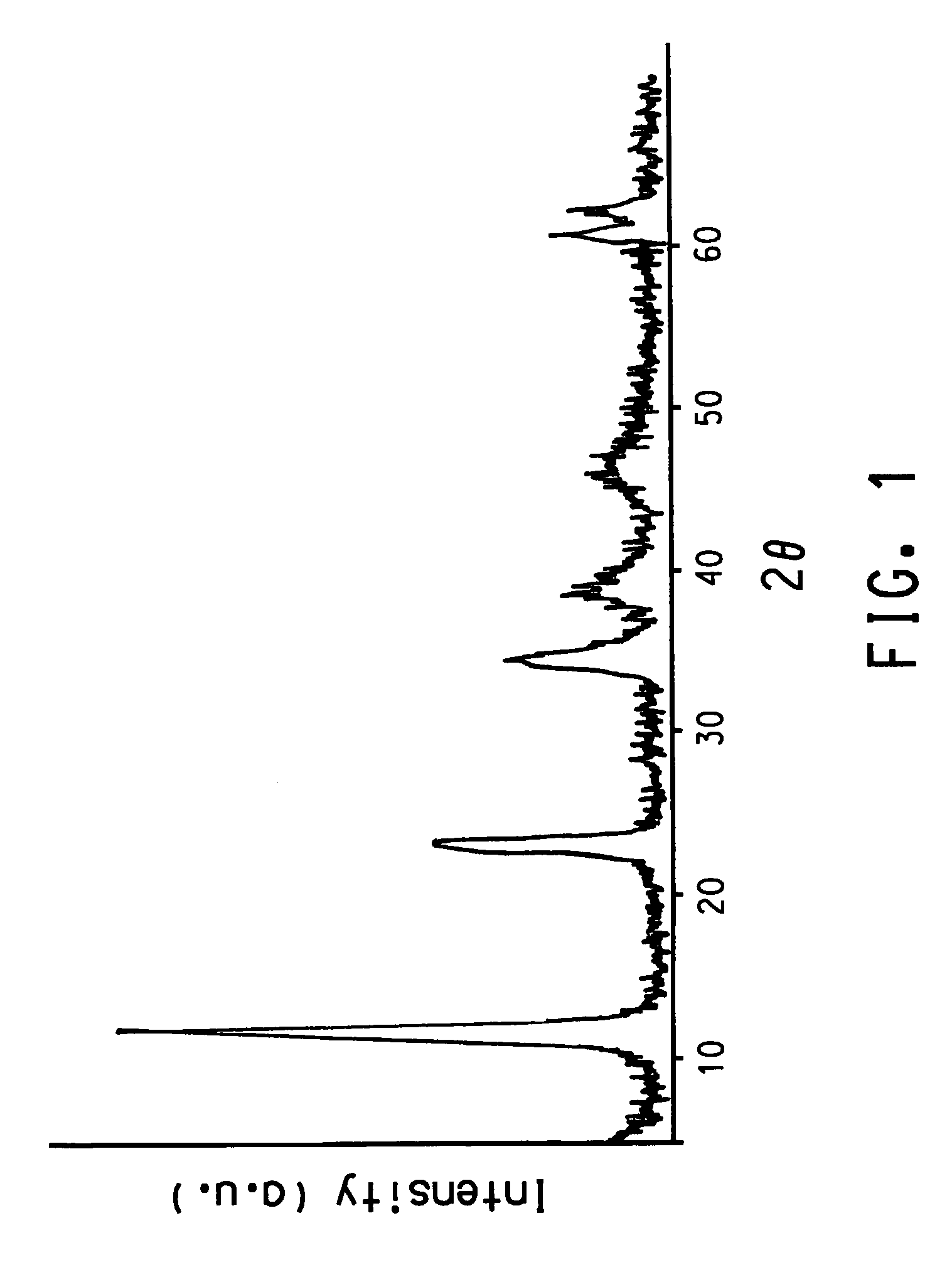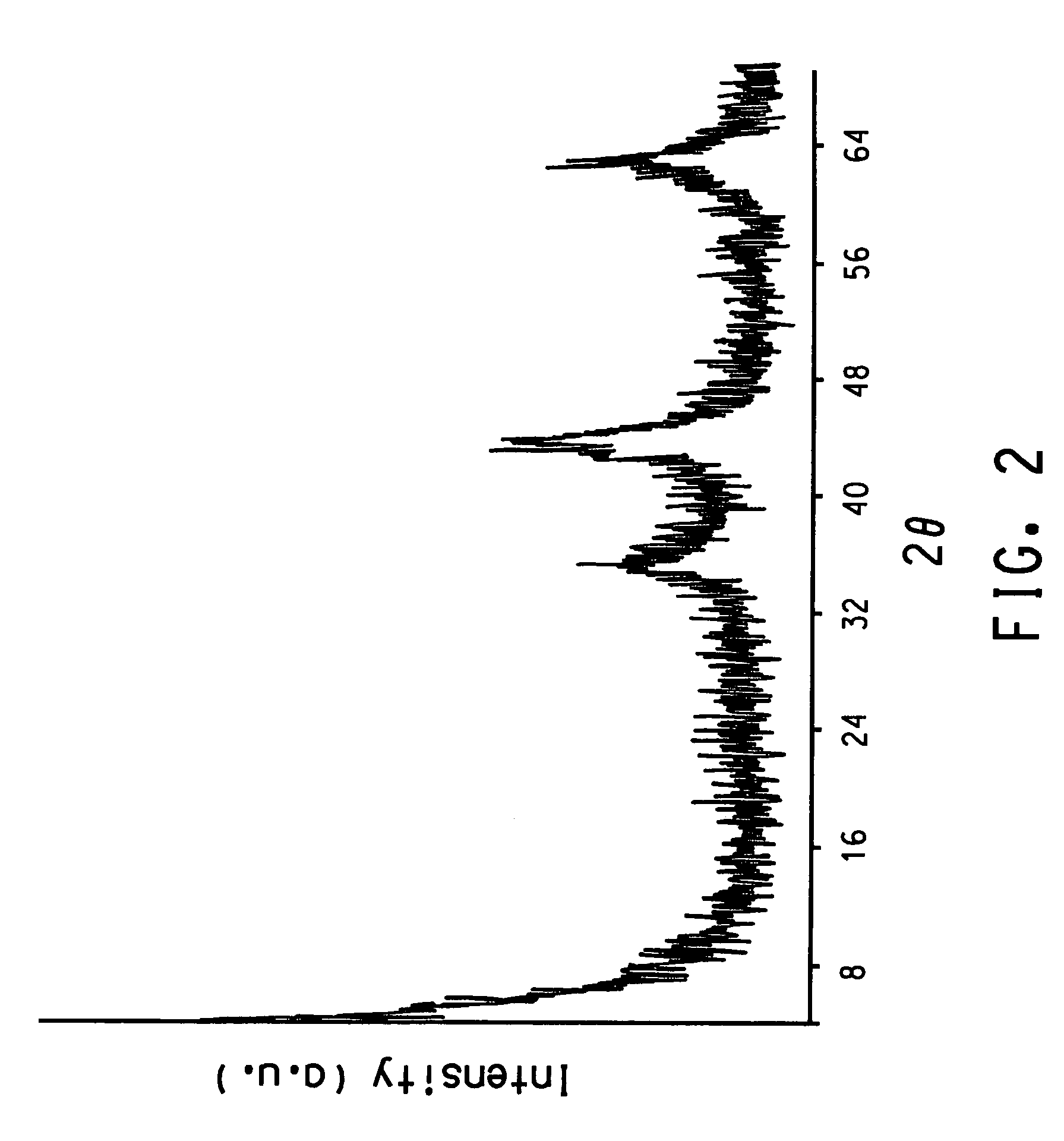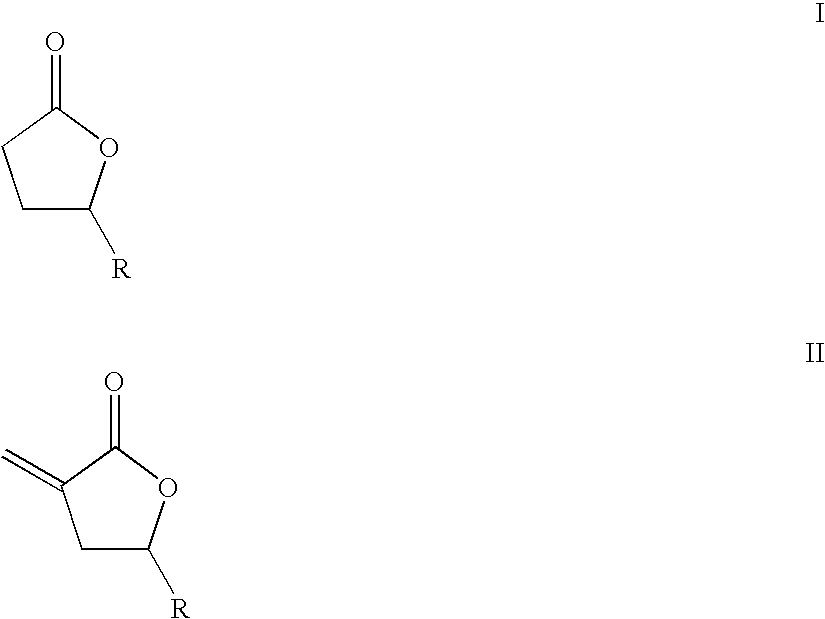Gas phase synthesis of methylene lactones using catalysts derived from hydrotalcite precursors
a technology of hydrotalcite and methylene lactone, which is applied in the direction of catalyst activation/preparation, physical/chemical process catalysts, metal/metal-oxide/metal-hydroxide catalysts, etc., can solve the problem of hydrothermally unstable materials showing catalytic performance that will deteriorate, and the catalytic activity of such materials for lactone conversion reactions cannot be predicted. problem, to achieve the effect of superior hydrothermal stability
- Summary
- Abstract
- Description
- Claims
- Application Information
AI Technical Summary
Benefits of technology
Problems solved by technology
Method used
Image
Examples
examples
Catalyst 1:
20 wt % Ba on decomposed (M2+1-xM3+x(OH)2)(An−x / n).yH2O, where M2+=Zn and Mg, M3+=Al, x=0.382 Catalyst 1
[0080]Barium acetate (Aldrich, Milwaukee Wis.) was dissolved in approximately 40 ml water and was allowed to contact approximately 10 g of ⅛″ Hydrotalcite Extrudates (Sud-Chemie). The hydrotalcite has an atomic ratio Zn 0.16 Mg 0.46 Al 0.382. The resulting material was allowed to dry at room temperature and was loaded into a 1″ diameter fritted quartz tube. The material was heated in a vertical tube furnace according to the following schedule: (All process steps were performed in at least 100 standard cubic centimeters per minute of flowing air) (i) heat to 120° C., and hold at 120° C.; heat at a rate of 5° C. / minute to 300° C., and hold for five hours at 300° C.; cool to room temperature.
Catalyst 2:
Decomposed (M2+1-xM3+x(OH)2)(An−x / n).yH2O, where M2+=Mg, M3+Al, x=0.25
[0081]In a one liter round bottom flask, 51.28 g of magnesium nitrate hexahydate, Mg(NO3)2.6H2O (EM Sc...
PUM
| Property | Measurement | Unit |
|---|---|---|
| temperature | aaaaa | aaaaa |
| 2θ | aaaaa | aaaaa |
| 2θ | aaaaa | aaaaa |
Abstract
Description
Claims
Application Information
 Login to View More
Login to View More - R&D
- Intellectual Property
- Life Sciences
- Materials
- Tech Scout
- Unparalleled Data Quality
- Higher Quality Content
- 60% Fewer Hallucinations
Browse by: Latest US Patents, China's latest patents, Technical Efficacy Thesaurus, Application Domain, Technology Topic, Popular Technical Reports.
© 2025 PatSnap. All rights reserved.Legal|Privacy policy|Modern Slavery Act Transparency Statement|Sitemap|About US| Contact US: help@patsnap.com



